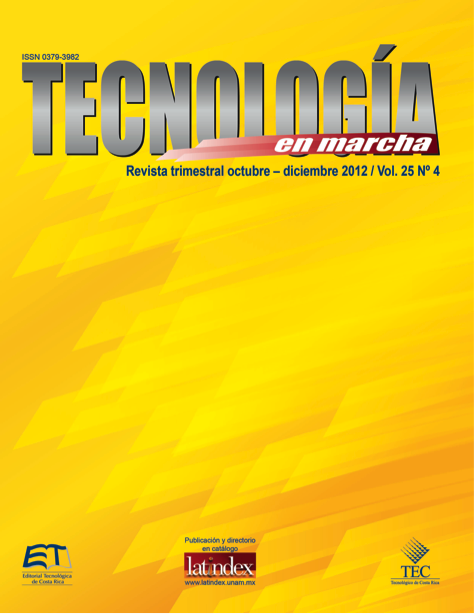Fecal contamination in several rivers of the Greater Metropolitan Area and the Osa Peninsula
Main Article Content
Abstract
Contamination of rivers in Costa Rica is an issue that requires special attention. The term “river con- tamination” means the incorporation of strange matter such as microorganisms (total and fecal coliforms), chemical products (soaps, fertilizers, pesti- cides), heavy metals (such as chrome, lead, mercury), or organic matter, the last one coming from soil through superficial water runoff as well as domestic wastewaters. All of them deteriorate the water qua- lity and reduce the different water usage of rivers.
Water resources are important not only for pre- servation of human life but also for animal and plant preservation. Costa Rica is worldwide known as a country with an outstanding biodiversity. Even though, the Great Metropolitan Area has most of its rivers severely contaminated, according to the water quality classification Holland index.
In this research, the fecal coliform content was analy- zed in 10 different rivers located in the provinces of San José, Alajuela, Heredia, Cartago, as well as Península de Osa. For the purpose of correlating fecal coliforms content with population density, tres different sampling areas were added to each river: the high level zone close to the river origin, the middle sampling area, and the lower level area closer to the river mouth.
It was found that middle and high population density areas are highly contaminated with fecal coliforms. Some of them surpass the permissible maximum level permitted for recreational primary contact activities, according to national regulations.
It was also determined that lower population den- sity zones, such as Tigre and Rincón rivers of the Península de Osa, the Poás River in the Alajuela Province alongside, and the Purires and Birrís rivers in Cartago, in the middle and higher zones, are less contaminated.The María Aguilar,Torres and Segundo rivers, characterized with a high density population, are the most contaminated waters, basically all year round.The rest of the rivers studied showed levels not appropriate for recreational activities during winter time, meanwhile appropriates levels are acceptable for the summer time.
Article Details
Los autores conservan los derechos de autor y ceden a la revista el derecho de la primera publicación y pueda editarlo, reproducirlo, distribuirlo, exhibirlo y comunicarlo en el país y en el extranjero mediante medios impresos y electrónicos. Asimismo, asumen el compromiso sobre cualquier litigio o reclamación relacionada con derechos de propiedad intelectual, exonerando de responsabilidad a la Editorial Tecnológica de Costa Rica. Además, se establece que los autores pueden realizar otros acuerdos contractuales independientes y adicionales para la distribución no exclusiva de la versión del artículo publicado en esta revista (p. ej., incluirlo en un repositorio institucional o publicarlo en un libro) siempre que indiquen claramente que el trabajo se publicó por primera vez en esta revista.

